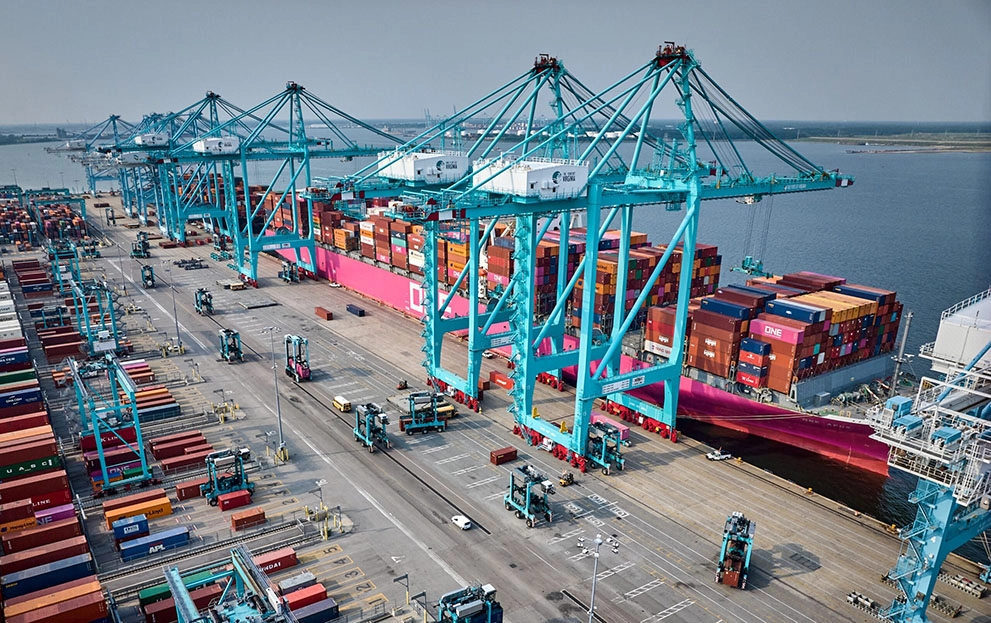Port of Virginia looks east of Suez to grow its market share
This article originally appeared on Cargomatic.com.

Stephen Edwards, CEO and Executive Director of the Virginia Port Authority (VPA), is of the firm belief that new trade lanes are opening through the Suez Canal for his facility.
Edwards’ remarks came in a conversation with Cargomatic Chief Spokesperson and SVP of Industry Relations Weston LaBar during the recent International Trade Symposium held by the Virginia Maritime Association on October 4-6 in Norfolk, VA.
Over the past year or so, the Port of Virginia has benefitted from cargo being diverted from the West Coast as shippers were concerned about possible port closures along the Pacific Ocean during the nearly 15 months of uncertain labor negotiations.
Edwards is sure that some of those diverted cargo streams will remain with the Port of Virginia, while others won’t.
“It isn’t normal for Northern California fruits and nuts to be coming through this port, right? But they were, and were being exported through our port to get to their final destination in Asia because it was actually a routing that worked. That’s not going to continue.”
By contrast, he said, some of the business diverted through to the East Coast is a result of what he called “permanent decisions.”
“Distribution centers are being built. Transload capacity is being built, and it is natural for it to stay here because it is a better routing to come through Suez to here and then move on.”
While U.S. West Coast labor negotiations may have prompted some of the recent shift in cargo to East Coast ports, Edwards believes a much longer-term trend is actually at play.
“I think the material shift is something that’s been going on for more than a decade. And it’s going to continue for a number of reasons, which are to do with port efficiency, to do with gateways, but also to do with geopolitical issues as well as just where trade is moving to.”
Crucially, he notes that “just as the West Coast was the beneficiary of the shift to Chinese production, the East Coast will be the beneficiary of that shift to Southeast Asia and South Asia production.”
Edwards is well aware of the shifting trade lanes coming out of the Indian subcontinent toward the Port of Virginia, noting that “as a port now we have five services coming in directly from Northwest India.”
That’s a huge change, he said, saying that if “you turn the clock back 10 years, it would’ve been one [service]. So we’re 500% of where we were.”
He notes that the ships coming along those new trade lanes via the Suez Canal also are bigger than they used to be, and that means effort is needed by the port to sustain that growing trade.
“Our job as a port is to make sure we can handle those bigger ships, the 13,000 to 14,000 TEU ships. Because to get the efficiency of the Suez route, you have to be able to allow the shipping lines to deploy their best assets. And their best assets are going to be those larger ships,” he said.
“So to get to the slot cost advantage they can provide, we have to build those bigger capabilities,” he said. “All of that is designed to say ‘We can handle your ultra-large container vessel to give you the economies of scale to come through the Suez Canal’.”
View the conversation between Stephen Edwards and Weston LaBar, here.







